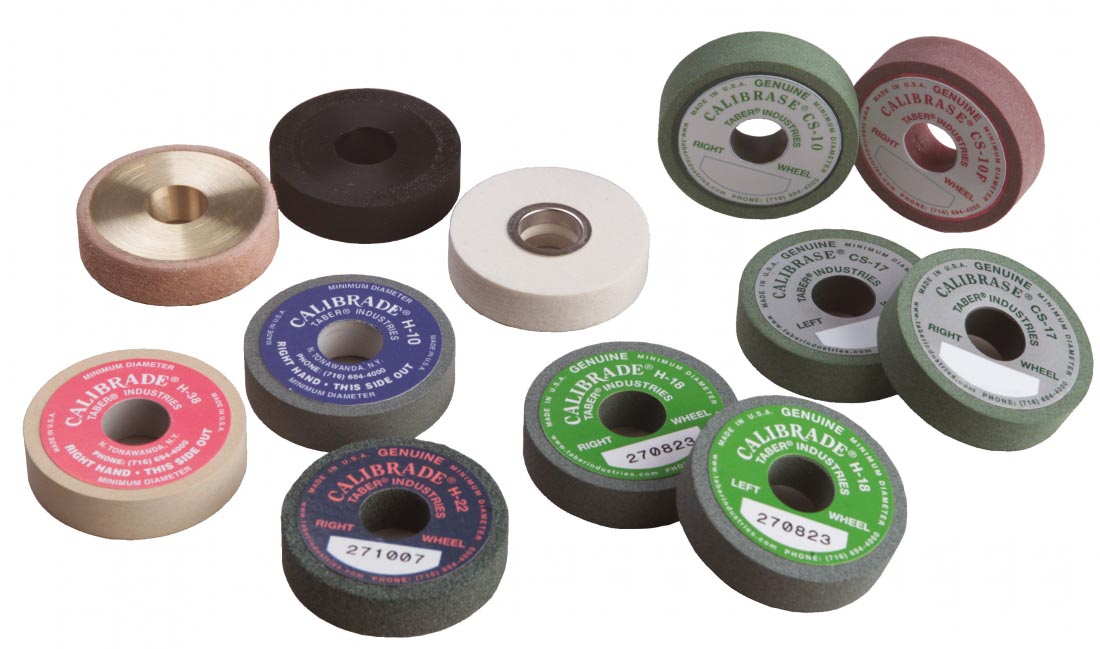We know that Taber Abraser is widely used and can meet dozens of different test standards. The products in each test standard are different, and different products are required to use different types of grinding wheels during the test. Faced with so many types of grinding wheels, how should we choose?
When we choose the grinding wheel, we must choose the corresponding grinding wheel according to the characteristics of the grinding wheel and the difference of the sample. Please refer to the grinding wheel models and corresponding sample types listed in the table below to help you select the correct grinding wheels.
| Wheel Model | Applications | Characteristics |
| CS-10 | Organic coatings, plastics, textiles, leather and paper products | Resilient, mild-medium abrading |
| CS-10F | Safety glazing materials and transparent plastics | Resilient, mild abrading designed to operate under loads of 250 or 500 grams |
| CS-17 | Anodized aluminum, powder coatings, ceramics, plastics and enamels | Resilient, Compared to the CS-10 wheel, harsher abrasion, operated using loads of 500 or 1000 grams |
| H-10 | Steel and ferrous alloys for resistance to abrasion
Test the effect of hardening and tempering treatment on steel and other ferrous materials |
Non-resilient |
| H-18 | Rubber (non-tacky), certain woven textile fabrics, coated fabrics
Flexible plastic sheets |
Non-resilient , medium coarse abrasive action |
| H-22 | Rubber, linoleum, leather, deep pile fabrics and concrete (such as automobile floor coverings) | Non-resilient, coarse abrasion |
| H-38 | Woven and non-woven fabrics, operate with 250 or 500 gram loads | Non-resilient, vitrified abrading wheel comprised of fine abrasive particles |
| CS-0, S32-rubber | Wet tests such as determining the relative abrasion of dental pastes, cleaning powders, or similar compounds
Adhesive sandpaper strips can be adhered to the periphery of the CS-0 wheel to evaluate the abrasion resistance of high-pressure decorative laminates and other products. |
Resilient, no abrasive particles, mild abrasive |
| S-42, S-33-sand paper strip
|
Vitreous and porcelain enamels, paints, metallic coatings, and furniture surfaces | Resilient, Medium abrasion |
| CS5-Felt | testing textile fabrics when the service wear requires one fibrous material to rub against another.
Designed to be tested with 250 or 500 gram loads |
Resilient |
| S35-tungsten carbide | Resilient materials such as rubber, linoleum, and leather | Non-resilient, very severe abrasion, sharp helical teeth, combine both a cutting and tearing action |


